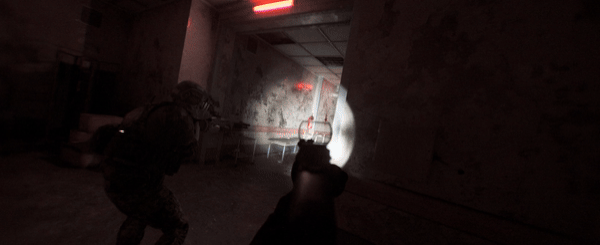The Evolution and Impact of Bodycams: Enhancing Transparency and Accountability
Bodycam is the first ultra-realistic multiplayer, first-person shooter game made using the latest technologies of the next-gen game engine Unreal Engine 5. Get ready to dive into fast-paced Bodycam actions, where every bullet counts and every choice can decide over the victory or loss of your team. In recent years, body-worn cameras, commonly known as bodycams, have emerged as a vital tool in law enforcement and other professional sectors. These devices, designed to record video and audio interactions between officers and the public, aim to enhance transparency, accountability, and trust. As their adoption continues to grow, it is essential to understand the evolution, benefits, and challenges associated with bodycams.
The Evolution of Bodycams
The concept of body-worn cameras has evolved significantly since its inception. Early prototypes were bulky and limited in functionality, but advances in technology have led to the development of compact, high-definition cameras with robust features. Today's bodycams are lightweight, durable, and capable of capturing clear video and audio even in challenging conditions. These devices often include features such as:
High-Definition Recording: Capturing detailed video in various lighting conditions.
Audio Recording: Providing context to visual footage.
Data Encryption: Ensuring the security and integrity of recorded data.
GPS Integration: Tracking the location of recorded incidents.
Wireless Connectivity: Enabling real-time streaming and data upload.
Enhancing Transparency and Accountability
The primary motivation behind the adoption of bodycams is to increase transparency and accountability in interactions between law enforcement officers and the public. Bodycams provide an objective record of events, which can be crucial in various scenarios:
Evidence Collection: Bodycam footage serves as valuable evidence in criminal investigations and court proceedings. It provides an unbiased account of incidents, helping to clarify disputed events and supporting the judicial process.
Behavioral Influence: The presence of bodycams can influence the behavior of both officers and civilians. Knowing that actions are being recorded encourages professionalism and adherence to protocols, potentially reducing instances of misconduct and confrontations.
Public Trust: By demonstrating a commitment to transparency, law enforcement agencies can build trust with the communities they serve. Public access to bodycam footage can reassure citizens that officers are held accountable for their actions.
Training and Evaluation: Bodycam footage is a valuable resource for training and performance evaluation. Agencies can use real-world scenarios to educate officers, highlight best practices, and identify areas for improvement.
Challenges and Considerations
While the benefits of bodycams are significant, their implementation is not without challenges. Agencies must address several considerations to maximize the effectiveness of bodycams:
Privacy Concerns: Bodycams capture interactions in various settings, including private residences and sensitive situations. Balancing transparency with privacy rights is a complex issue that requires clear policies and guidelines.
Data Management: The vast amounts of data generated by bodycams necessitate robust storage, management, and retrieval systems. Ensuring data integrity and accessibility while maintaining security is a critical task.
Cost: The initial investment in bodycams, coupled with ongoing maintenance, data storage, and management costs, can be substantial. Agencies must allocate resources effectively to support this technology.
Legal and Policy Frameworks: Developing comprehensive policies that govern the use, access, and dissemination of bodycam footage is essential. These policies must comply with legal standards and address issues such as when and how footage can be released to the public.
Expanding Applications of Bodycams
Beyond law enforcement, bodycams are finding applications in various sectors, including:
Healthcare: Bodycams are used by medical professionals to document patient interactions, enhance training, and improve patient care.
Security: Security personnel in various industries utilize bodycams to monitor activities, deter criminal behavior, and document incidents.
Retail: Retail employees use bodycams to prevent theft, ensure customer service quality, and resolve disputes.
Conclusion: The Future of Bodycams
The adoption of bodycams represents a significant advancement in promoting transparency and accountability across multiple sectors. As technology continues to evolve, bodycams will likely become even more integrated into professional practices, offering enhanced features and capabilities.
To maximize the benefits of bodycams, it is crucial for organizations to address the associated challenges through thoughtful policy development, adequate resource allocation, and ongoing training. By doing so, bodycams can serve as a powerful tool for building trust, ensuring accountability, and improving the quality of interactions between professionals and the public.
As we look to the future, the continued evolution and adoption of bodycams will undoubtedly play a critical role in shaping the landscape of transparency and accountability in our society.
 RSS Feed
RSS Feed Twitter
Twitter
 June 10, 2024
June 10, 2024
 PATRICK JAMES
PATRICK JAMES







